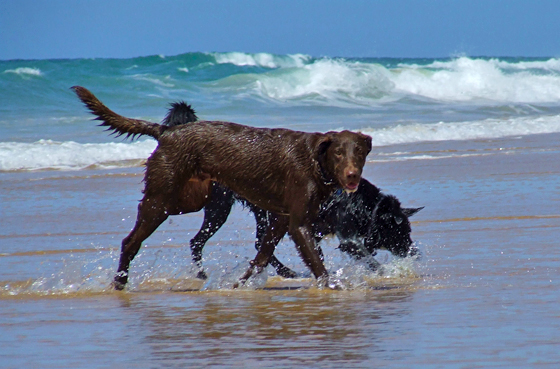Dunbar Leftovers
This post is part of the series in response to Dunbar’s 2012 Australian seminars. See index.
Dunbar talks a lot. He’s a great speaker to listen to, because he has no hesitation in going off topic or talking about relevant experiences that are clearly not in his notes. However, this means I have a lot of good little bits that don’t really belong in my other posts! So let’s talk about some of them briefly.
- Dogs should be integrated into society as much as possible, and dogs need good temperaments to do this.
- Vets don’t know enough about dog behaviour and socialization.
- We don’t really know if off leash play between dogs is beneficial. It’s hard to measure, and no evidence exists. Dunbar suggested that off lead play may even be beneficial for people.
- The APDT foundation funds research into dog training.
- Dunbar talked about teat appropriation in puppies. By 10 days of age, some puppies have started to ‘claim’ certain teats and hierarchies have begun to develop. The bigger ‘brutish’ puppies push their way to their favourite teats. The smaller puppies have to use their brains and think about how to get a feed, and normally move to another teat. The bigger puppies are normally less intelligent than the smaller puppies, who had to use their brains from an early age.
- Dunbar described dog sex as a “massive temperament test”. That is, dogs who can’t mate naturally because they are aggressive, disinterested, or just unskilled, shouldn’t be bred from as they have poor temperaments that aren’t worth replicating in their offspring.
- Dunbar said “no male dog is worth more puppies than a bitch can have in her lifetime”. That is, a dog shouldn’t have more than about 6 litters in their lifetime.
- He advocated waiting for 10 years before using a dog at stud. A dog that is a ‘good dog’, structurally and temperament wise, at 10, is a dog worth breeding from. (Personal comment: While I agree with this in principle, unfortunately many dogs will become sterile before 10 if they are not used. There is a bit of a ‘use it or lose it’ case for dog fertility.)
- Apparently, someone called “Thelma” (a scientisit, name suggestions welcome!) theorized that dogs would eat human faeces and that’s the source of their domestication.
- Dunbar suggested that breeders, when screening puppy buyers, should ask, “Why problem behaviours to you expect to see in your puppy?” (as breeds have typical behaviours that are often problematic). From there, the next question should be, “How are you going to stop these problems occurring?” This is a means of testing the buyer’s knowledge of the breed, and also ascertaining the risk of the puppy ending up in a shelter at a later point.
Then questions that I thought as I listened:
- Dunbar talks about his dog Doon, and how his dog will never fight another dog. Dunbar described a number of scenarios where Doon ignored aggression from other dogs. While I think it’s nice to have a pacificist dog, it also brings a degree of responsibility that an owner must have to protect the dog from aggressors. The stories Dunbar told made me doubt Dunbar’s proactive prevention of Doon being the subject of other dog’s aggression.
Thank-you for working through our Dunbar series! I will soon summarise all the posts to help you navigate through the mass of content from three days with Dunbar.




